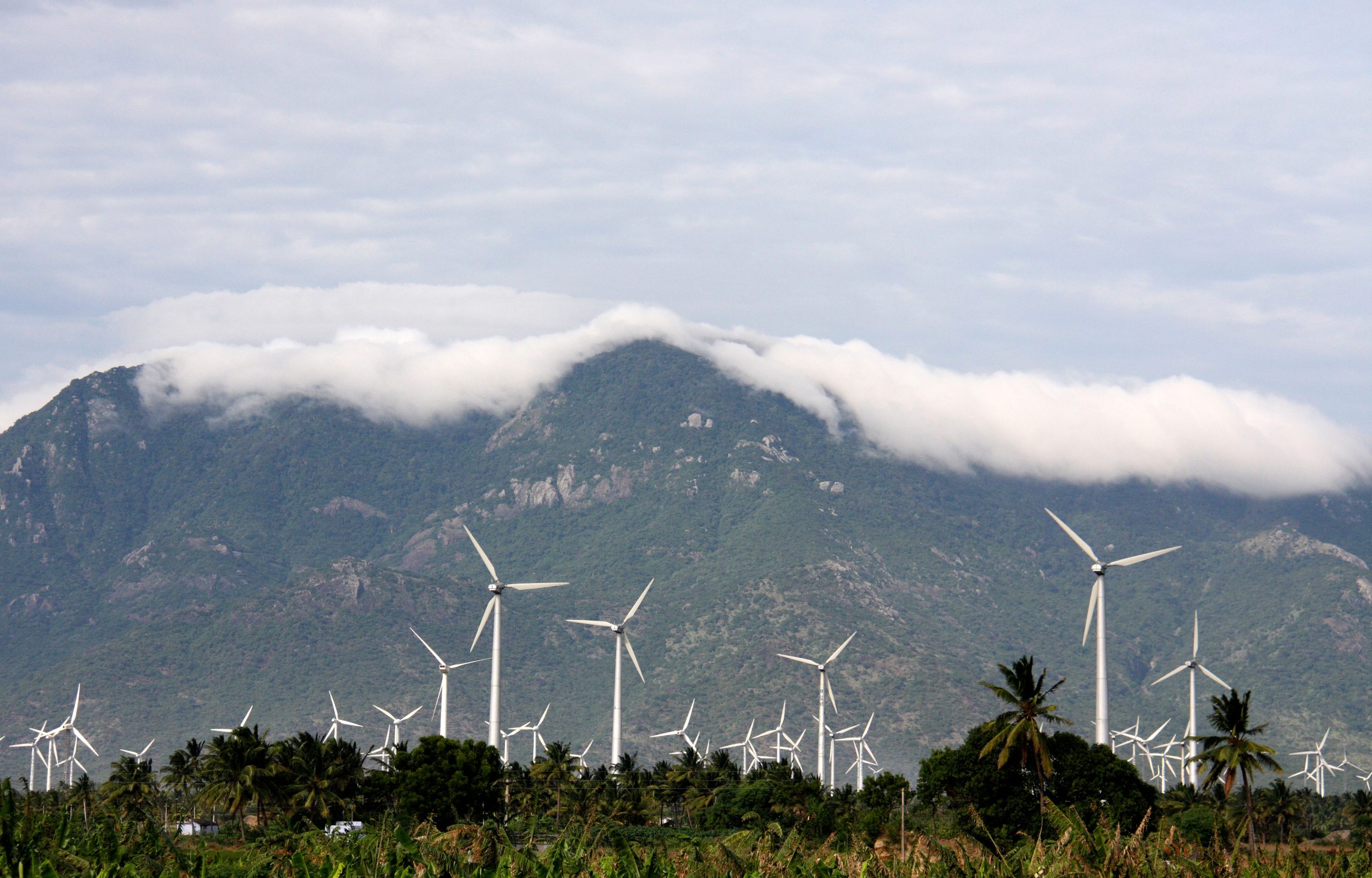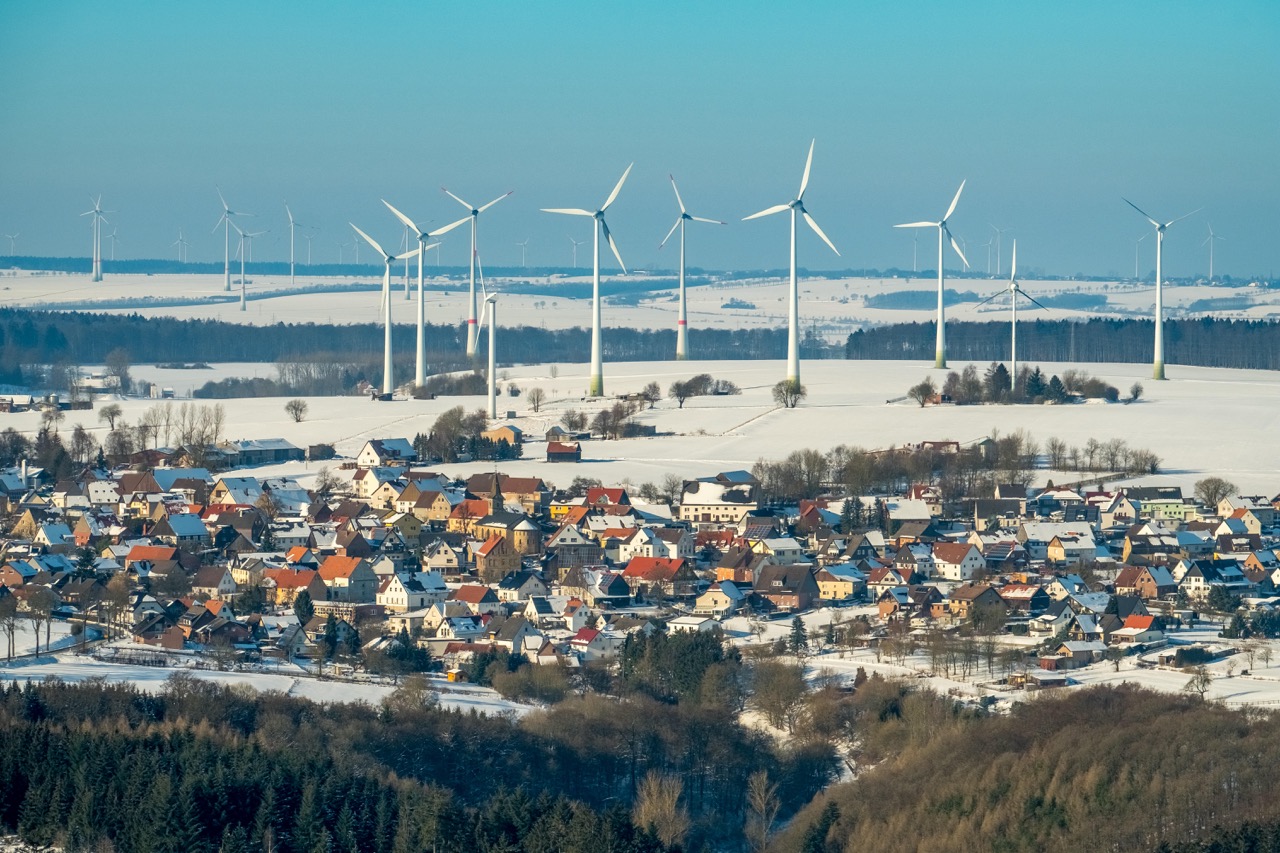Chapter 1:
Global analysis
In this chapter
Global power sector emissions plateaued
Global power sector emissions remained almost unchanged in the first half of 2023, as wind and solar continued to increase their share in the world’s power mix. However, adverse hydro conditions–likely exacerbated by climate change–prevented emissions from falling in the first half of 2023.
The global power sector produced 5,795 million tonnes of carbon dioxide (mtCO2) in the first half of 2023, almost unchanged from the same period last year, with a slight increase of 0.2% (+12 mtCO2).
The plateau in 2023 is notable. Historically, power sector emissions have been rising structurally. There have only ever been falls during global economic shocks such as the 2008 financial crisis or the 2020 Covid-19 pandemic.
Major high-income economies saw some of the biggest falls in emissions. Emissions fell in the EU by 17% (-59 mtCO2), in the US by 8.6% (-64 mtCO2), in Japan by 12% (-25 mtCO2) and in South Korea by 3% (-3.6 mtCO2). India saw a slower increase in emissions, with emissions rising by 3.7% (+19 mtCO2) in the first half of 2023 compared to a 9.7% increase (+45 mtCO2) in the same period last year. In China emissions rose by 7.9% (+173 mtCO2), in large part due to poor hydro conditions.
Global fossil generation remained almost unchanged
Fossil fuels generated 59.9% of global electricity in the first half of 2023 (8,100 TWh), compared to 60.1% in the same period last year (8,091 TWh).
Global fossil fuel generation remained almost unchanged, rising by only 0.1% (+9 TWh) in the first half of 2023, compared to the same period last year. Coal generation increased by 1% (+47 TWh), gas generation rose by 0.5% (+14 TWh) but other fossil fuel (mainly oil) generation fell 15% (-52 TWh). Changes at the regional and country level varied significantly.
Japan and the EU were the only two high-income, high-polluting economies that saw a fall in both coal and gas. In contrast, in the US coal fell but gas generation increased.
Coal generation fell in some major high-income economies in the first half of 2023: the EU (-23%, -49 TWh), the US (-27%, -112 TWh), Japan (-7.4%, -10 TWh) and South Korea (-2.5%, -2.2 TWh). These falls were driven by the falls in electricity demand in these countries, and in the US also because of the coal-to-gas switch.
Elsewhere, coal fell in Chile (-33%, -3.8 TWh) despite demand slightly increasing (+0.5%, +0.2 TWh). Coal generation also decreased in South Africa (-9.8%, -10 TWh).
In contrast, coal generation increased in China (+8%, +203 TWh) and India (+3.8%, +23 TWh) and some other developing nations.
Gas generation fell in the EU (-13%, -33 TWh). Gas generation also fell in Japan (-17%, -28 TWh), and in India (-3.4%, -0.5 TWh), but increased in the US (+8.1%, +61 TWh) and in China (+8%, +9.7 TWh). In the US, gas generation has been increasing since 2005 while coal has been declining, a trend that is expected to continue at least in the near-term.
Generation from other fossil fuels, mainly oil, fell globally, with falls including the EU (-12%, -3.8 TWh), Japan (-22%, -6.1 TWh) and the US (-8.5%, -1.6 TWh) among many other countries.
The first half of 2023 saw a historic decline in global hydro generation of 8.5% (-177 TWh), caused by droughts which were likely exacerbated by climate change. The fall in the six months to June was larger than any decline recorded across a full year in the last two decades. Three-quarters of the fall came from China (-129 TWh). As a result, hydro generated 14% (1,898 TWh) of global electricity in the first half of 2023, compared to a share of 15% (2,075 TWh) in the same period last year.
The adverse hydro conditions prevented a fall in global power sector emissions. Had hydro generation remained at the same levels seen in H1-2022, fossil generation would have not had to compensate for the hydro deficit of 177 TWh. Instead of a small rise, fossil generation would have fallen 168 TWh, leading to a fall in power sector emissions of 2.9% (-119 million tonnes of CO2).
The decline in hydro came despite additions in hydro capacity, as a result of worse hydro conditions in China, the US, India and other countries. This is evident in the capacity factor, which shows the actual output relative to the theoretical limit of the existing capacity. The first half of 2023 saw dramatic falls in the global capacity factor of hydro generation, which fell to 35.6%, nearly four percentage points lower than in H1-2022. Although the capacity factor for hydro fluctuates significantly between the first and second half of the year due to seasonal variations, H1-2023 represents a dramatic fall compared to historical values. Across the last 10 years, the average global capacity factor was 40.9%. This new low in 2023 comes after the global hydro capacity factor already hit two consecutive all-time annual lows in 2021 (39.6%) and 2022 (39.4%).
The hydro issues were particularly notable in China, where last year’s droughts and ongoing heat waves in 2023 affected reservoir levels and hydro output. China’s hydro capacity factor fell to 30.5% in H1-2023, ten percentage points below the first half of last year and the lowest value seen since at least 2015. With China representing nearly a third of the world’s hydro generation (30% in 2022), conditions in China strongly influence global hydro output.
Wind and solar were the only two electricity sources that significantly increased their share in the global power mix. Together wind and solar generated 14.3% of global electricity in the first half of 2023 (1,930 TWh), a 1.5 percentage points increase from the same period last year, when they generated 12.8% of global electricity (1,717 TWh). In the first half of 2023, 5.5% of global electricity came from solar and 8.8% from wind.
Globally, wind and solar both grew in H1-2023 compared to the same period last year, although at a slower rate than they did last year. Wind generation increased by 10%, lower than the growth in the same period last year (+16%). Solar generation rose 16%, also lower than the 26% increase in the same period year. Such increases are below the growth needed for net zero, which requires a yearly average growth of 17% for wind and 24% for solar, according to the IEA’s net zero scenario.
In absolute terms, wind and solar gain also remained below last year’s level: solar grew by 104 TWh compared to 132 TWh in the same period last year. Wind generation increased by 109 TWh compared to gains of 147 TWh in the same period last year.
China remains a global leader in wind and solar
China accounted for 91% of global growth in wind power and 43% of global growth in solar generation in the first half of 2023. The next largest contributors were the EU and India, who each accounted for 12% of global growth in solar generation.
Global electricity demand rose only 0.4% (+59 TWh) in the first half of 2023; a much lower rise than 2.8% in the same period last year. The increase is also lower than the yearly historical average over the last decade of 2.6%. Such low growth was driven by demand falls in a number of mature economies, and by lower than expected demand growth in India. Electricity demand fell by 5.6% in Japan, 4.6% in the EU, 3.4% in the US and 1.4% in South Korea. Such falls in demand contributed to reducing emissions in each of these countries and to flattening emissions at the global level.
Demand falls in high income economies were due to varying reasons. In the EU, the electricity demand falls have continued since March 2022 in the wake of Russia’s invasion of Ukraine. The fall in the first half of 2023 is larger than the falls due to the Covid-19 pandemic in 2020. Since 2022, the demand falls can be attributed to a combination of factors: policy measures aimed to reduce demand amidst the energy crisis and security of fossil gas supply concerns, a large cut by energy-intensive industries, mild weather in winter, and reduced personal electricity use due to a cost of living crisis. Under-reporting of behind-the-meter solar generation is also leading to some misattribution, showing electricity demand falling, instead of solar rising. This is a problem in many European countries, made apparent by the unprecedented surge in new rooftop solar installations. In the US, demand fell due to slower economic activity and milder weather. In Japan, demand fell due to milder weather but also due to some electricity saving measures.
Demand increased in China and India as these countries continue to advance their economies. In China, electricity demand increased by 6%, in line with national estimates for 2023 and similar to the historic average for 2012-2022 (+5.9%). In India, demand increased by 3.1%, which was lower than the average growth for 2012-2022 (+5.4%) and much slower than the 11% growth seen in the same period last year, when the country was recovering from Covid-19 lockdowns as well as experiencing some heatwaves.
Related Content




